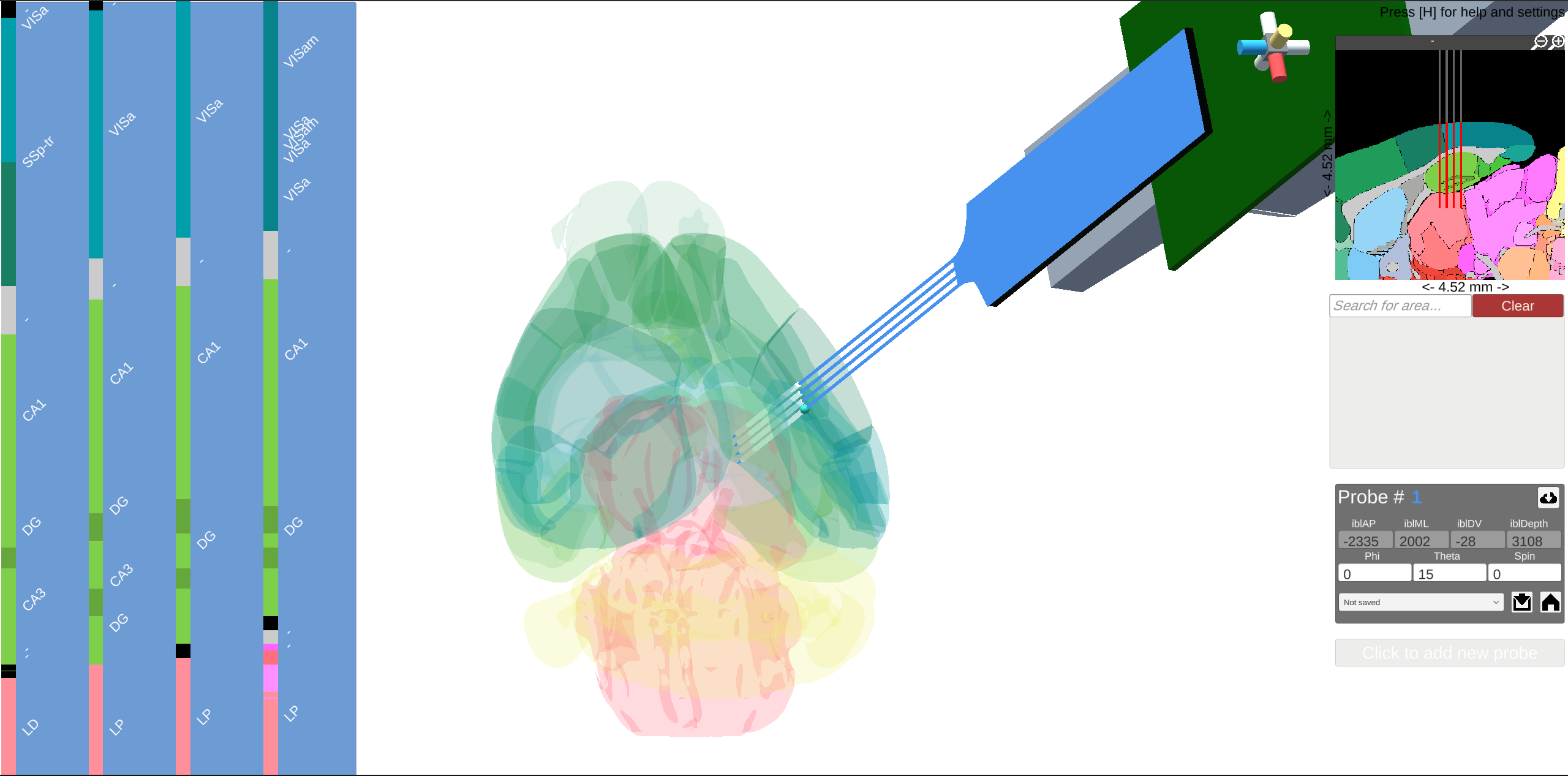Pinpoint
Type: Software,
Keywords: Trajectory planning, electrophysiology, sensapex, new scale, mouse, rat

Multi-probe planning for Neuropixels using interactive 3D visualization in a web browser
Pinpoint is a trajectory planning tool for acute and chronic electrophysiology recordings as well as injections. Using an interactive 3D scene, Pinpoint allows researchers to plan multi-probe insertions in an intuitive environment, all in the convenience of your web browser. Users can explore different options for craniotomies and check that insertions will not interfere with other parts of a surgical implant or recording rig. During live experiments, Pinpoint can be linked to hardware micro-manipulators as well as data acquisition software, allowing you to follow along as your probes are placed into position inside the brain, and forward that anatomical information to be viewed alongside your live data.
* Pinpoint is an interactive 3D planning tool for Neuropixels probes, that interfaces with electrophysiology manipulators, allowing you to plan and execute your experiments in an intuitive visual environment.
* Pinpoint allows you to plan with up to 16 shanks at the same time, four Neuropixels 2.0 probes, or sixteen 1.0 probes.
* Our 3D environment automatically checks for collisions between your probes and rig parts and helps you visualize and understand the 3D space around your subject’s brain.
* Pinpoint can be linked with Sensapex and New Scale manipulators for visualization during live recordings and for automated probe insertion.
* Pinpoint requires no installation: our planning environment can run on your laptop in your web browser. Head to https://data.virtualbrainlab.org/Pinpoint/ and check it out now!
* Pinpoint is designed to assist you in planning acute or chronic Neuropixels recordings in the mouse and rat brain. After planning your insertions, Pinpoint provides you with surface coordinates relative to a reference coordinate (by default, Bregma) and a set of probe angles that you can use to re-create a planned insertion in the in vivo mouse brain.
* Mouse
* Rat
* Developmental atlases, marmoset, macaque and more coming soon in 2023
* Intuitive interface allows anybody to easily plan trajectories to any target region in the mouse or rat brain
* Runs in a web browser, with no installation
* Supports unlimited numbers of electrophysiology or injection probes
* Can be linked to hardware micro-manipulators from Sensapex and New Scale for live control of probes and live readout of position
* Can be linked to Open Ephys and SpikeGLX data acquisition software to render anatomical data alongside electrophysiology data
* Automatically handles collisions with rig parts
* Currently limited to C57 mouse brain and Waxholm rat atlas (additional reference atlases coming soon)
* Electrophysiology manipulator link features limited to Sensapex and New Scale hardware
* Requires a web browser capable of running WebGL 2.0 (Edge 79+, Firefox 51+, Chrome 56+, Safari 15.5+), or a Windows 10+ or Linux desktop
Daniel Birman, Postdoctoral Fellow
University of Washington, Seattle, WA
TEAM / COLLABORATOR(S)
Kenneth Yang, Research Assistant, University of Washington
Nick Steinmetz, Assistant Professor, University of Washington
FUNDING SOURCE(S)
* Washington Research Foundation
* International Brain Laboratory
* Simons Foundation
* Wellcome Trust
* NIH BRAIN Initiative U19

